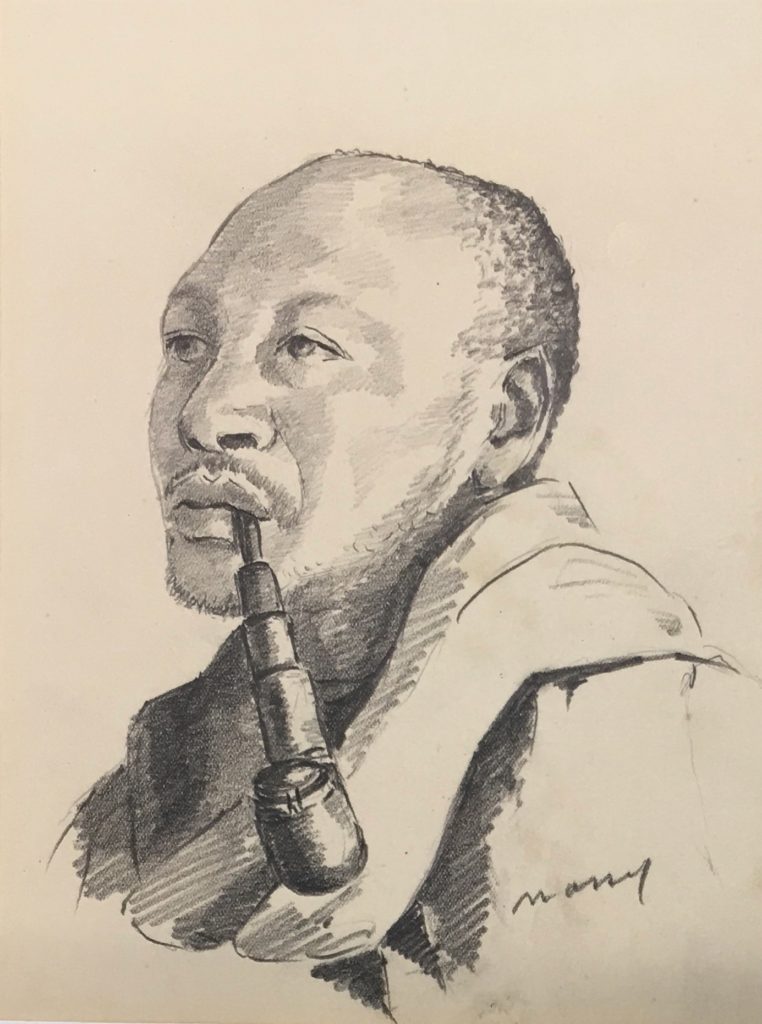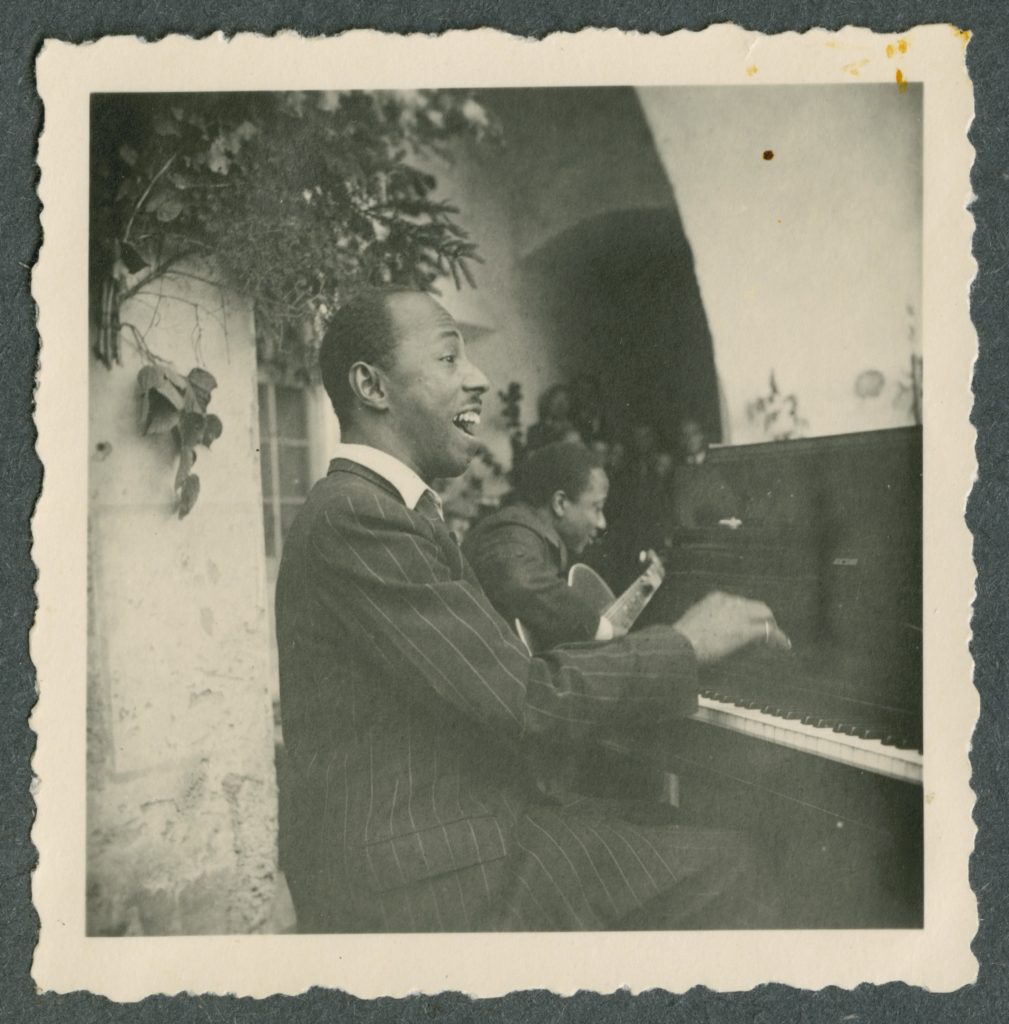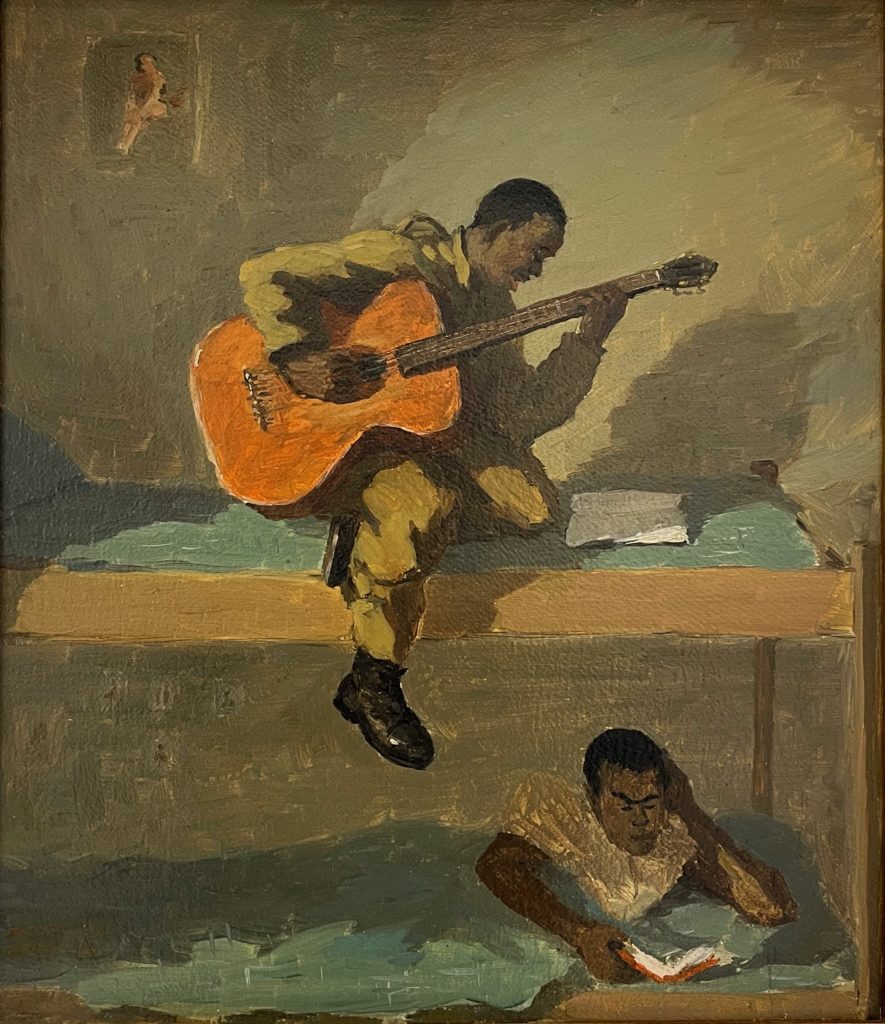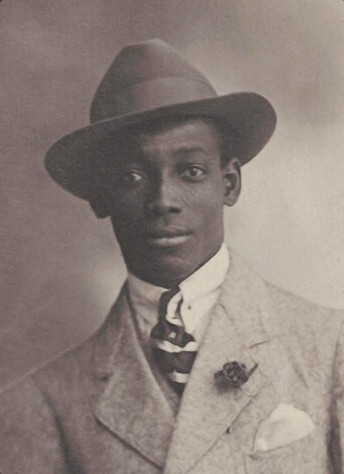Black Life in a Nazi Internment Camp:
The Art of Josef Nassy
Sarah Phillips Casteel
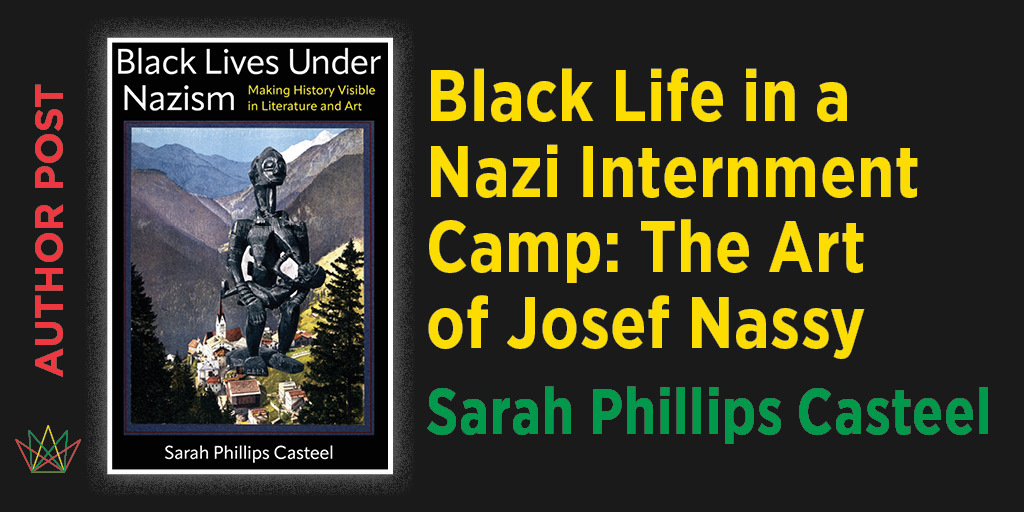
In July 1947, an exhibition of artworks created in Nazi concentration and internment camps was mounted in railway cars stationed in Brussels’s Gare du Nord. Included in the exhibition were several works by Josef Nassy, an artist from the Dutch Caribbean colony of Suriname. Nassy, who had both African and Jewish ancestry, created the artworks while imprisoned from 1942 to 1945 in Ilag VII, a Nazi internment camp for civilian POWs in Bavaria.
While the presence of a Caribbean artist in a Nazi internment camp may seem surprising, Nassy was not the only prisoner of African descent in Ilag VII. Interned alongside him were sixteen other Black men, mostly African Americans. Many of them appear in the more than two hundred finely rendered paintings and drawings that Nassy produced during his internment. Now in the holdings of the United States Holocaust Memorial Museum in Washington, DC, the little-known Josef Nassy Collection is to my knowledge the most substantial visual record of Black prisoners in the Nazi camp system.
How did Nassy and the other Black internees come to be imprisoned in Ilag VII? In Nassy’s case, it was an instance of mistaken identity. In 1929, while living in New York City (to which he had immigrated at the age of fourteen), Nassy was offered a job installing sound systems for the first talking movies in Europe. Before leaving for Europe, he was required by the Melotone Corporation to obtain an American passport. In order to claim American citizenship, Nassy changed the place and date of his birth from Suriname’s capital, Paramaribo, in 1904, to San Francisco in 1899 (the San Francisco earthquake of 1906 had destroyed birth records predating that year, making it impossible to dispute his claim). What Nassy could not have foreseen was how profoundly his falsification of his citizenship would shape his wartime experiences.
After working in England and France, Nassy eventually settled in Belgium, where he studied painting at the Academie des Beaux-Arts and where he continued to present himself as an American citizen. Following the Nazi occupation of Belgium and the entry of the United States into the war, he was arrested as an enemy alien in 1942 together with other Black residents of Belgium such as the African American jazz pianist Henry Crowder (remembered today for his relationship with the shipping heiress Nancy Cunard). Nassy and Crowder were first sent to a transit camp in Leopoldsburg, Belgium, and then transferred to Ilag VII in Laufen and Tittmoning, Bavaria. In Ilag VII, Nassy encountered other African American jazz musicians and performers, including the pianist Freddy Johnson and the guitarist Johnny Mitchell.
When the war broke out, African Americans in Europe were faced with a dilemma: Should they risk remaining on the continent against the advice of their government? Or should they return to the difficult conditions at home that they had sought to escape through emigration? The white American saxophonist and Ilag VII internee George Lukes later recalled that “[Johnny] Mitchell and some of the other black men who were married to European wives were quite ambivalent about returning to the U.S. because of prevailing racial bias in those days.”[ii] In Nassy’s case, this ambivalence was compounded by his Caribbean origins and fraudulent American citizenship.
Notably, Nassy was not alone in Ilag VII in falsifying his citizenship. The camp also held a number of Polish Jewish prisoners who had obtained Latin American papers, including the artist Max Brandel.[iii] My research on Black experience in Nazi-occupied Europe has led me to conclude that had Nassy’s true citizenship been discovered, he would likely have fared far worse. Other Dutch colonial subjects who were apprehended by the Nazis, particularly those suspected of being involved with the Resistance, tended to be deported to concentration camps such as Mauthausen and Neuengamme, where conditions were much more brutal. The most famous example is that of the celebrated Surinamese anticolonial thinker Anton de Kom, who was arrested in August 1944 and died in April 1945 in Camp Sandbostel, a satellite of the Neuengamme concentration camp.
Spared this fate by his feigned U.S. citizenship, Nassy remained for the duration of the war in Ilag VII, where, as his artwork poignantly documents, the conditions, while relatively mild, were still very challenging. Because Ilag VII was governed by the Geneva Convention, the international YMCA provided the internees with sporting equipment, books, musical instruments, and art supplies. Thanks to these supplies, Nassy was able to produce an extensive visual diary of his and other Black prisoners’ daily life in a Nazi internment camp. Nassy’s visual diary testifies to the presence of Black prisoners in the Nazi camp system. At the same time, it reveals artmaking as an expression of resistance that aided the Black prisoners’ spiritual and psychological survival. A unique and profoundly moving record of Black wartime experience in Europe, the Josef Nassy Collection deserves to be much better known.
Sarah Phillips Casteel is professor of English at Carleton University, where she is cross-appointed to the Institute of African Studies, and a member of the Holocaust Educational Foundation of Northwestern University’s Academic Council. She is the author of Black Lives Under Nazism: Making History Visible in Literature and Art.
[i] Monica Rothschild-Boros, In the Shadow of the Tower: The Works of Josef Nassy, 1942-1945 (Irvine, CA: Severin Wunderman Museum, 1989).
[ii] George Lukes, email message to Anthony Barnett, May 31, 2007, http://abar.net/crowderlukes.htm.
[iii] See Eve Brandel, “The Caricaturist,” Medium, May 30, 2020, https://evebrandel.medium.com/the-caricaturist-a7bebbad79b1. Max Brandel’s caricature of Josef Nassy is in the collection of the United States Holocaust Memorial Museum.
Categories:African American / Black StudiesArt and ArchitectureAuthor-Editor Post/Op-EdBlack History MonthHistoryLiterary Studies
Tags:Black History Month 2024Black Lives in the Diaspora: Past Present FutureBlack Lives Under NazismHolocaustIlag VIIJosef NassyNazi internment campSarah Phillips Casteel


